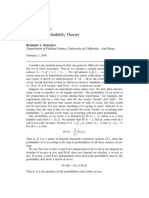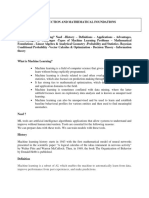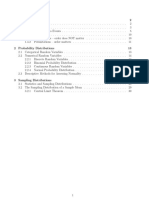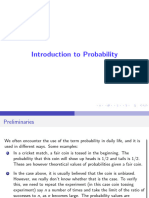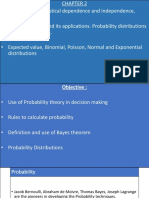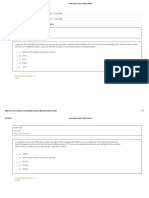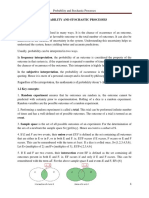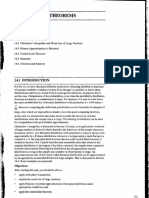0% found this document useful (0 votes)
97 views9 pagesLecture-2: Assignment - 1 Problems
1. The document discusses key concepts in probability including: random variables can be continuous or discrete; the total probability theorem defines the probability of an event A as the sum of the probabilities of A intersecting mutually exclusive/collectively exhaustive subsets of the sample space; and Bayes' theorem gives the conditional probability of an event A given B.
2. An example shows how to use Bayes' theorem to calculate the probability a defective part came from each of three factories given the probabilities of defects from each factory and the probabilities of procuring parts from each.
3. Random variables are functions that assign a numerical value to each outcome of an experiment, and can be classified as continuous, discrete, deterministic, or stochastic depending
Uploaded by
KartiK DhimanCopyright
© © All Rights Reserved
We take content rights seriously. If you suspect this is your content, claim it here.
Available Formats
Download as DOCX, PDF, TXT or read online on Scribd
0% found this document useful (0 votes)
97 views9 pagesLecture-2: Assignment - 1 Problems
1. The document discusses key concepts in probability including: random variables can be continuous or discrete; the total probability theorem defines the probability of an event A as the sum of the probabilities of A intersecting mutually exclusive/collectively exhaustive subsets of the sample space; and Bayes' theorem gives the conditional probability of an event A given B.
2. An example shows how to use Bayes' theorem to calculate the probability a defective part came from each of three factories given the probabilities of defects from each factory and the probabilities of procuring parts from each.
3. Random variables are functions that assign a numerical value to each outcome of an experiment, and can be classified as continuous, discrete, deterministic, or stochastic depending
Uploaded by
KartiK DhimanCopyright
© © All Rights Reserved
We take content rights seriously. If you suspect this is your content, claim it here.
Available Formats
Download as DOCX, PDF, TXT or read online on Scribd
/ 9























